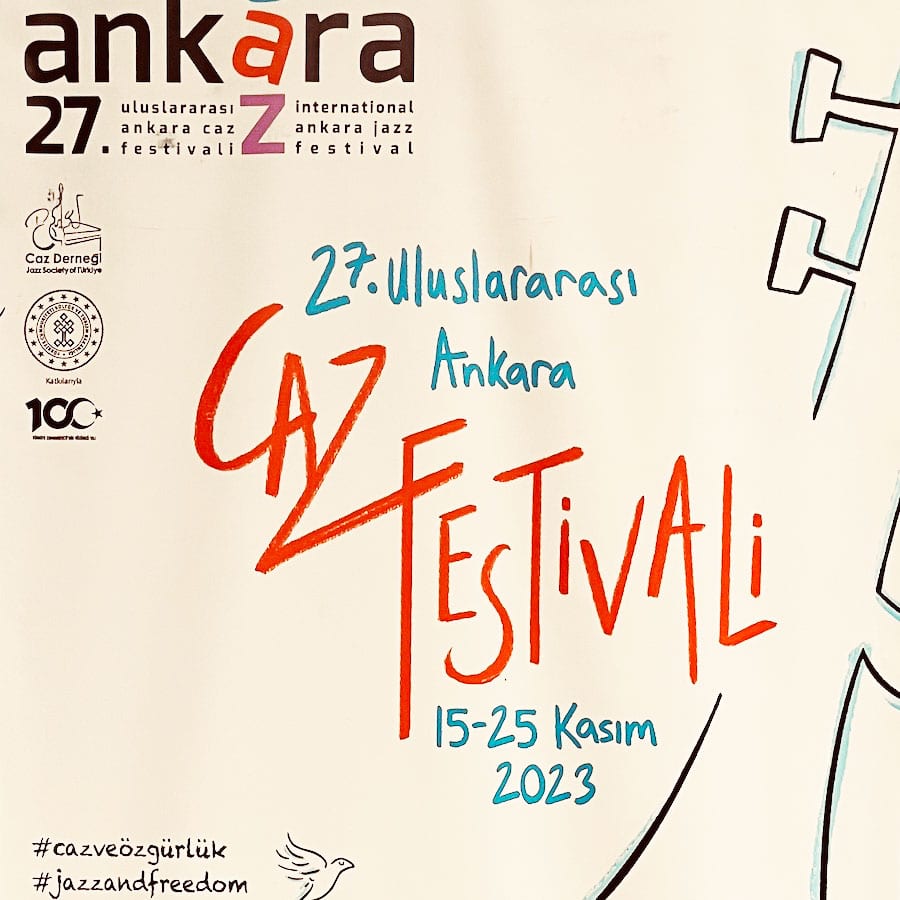
From September 15 to 25, 2023, the twenty-seventh edition of the International Ankara Jazz Festival (Ankara Caz Festivali) took place. An opportunity to discover some incredible musicians, too rare in our French and Western European festivals. The formula is simple: 18 days – 18 concerts, in a variety of venues in the capital, Ankara.
As tourists, we’re more accustomed to visiting the Anatolian coast, Cappadocia or ancient Constantinople, Istanbul. But Ankara, the administrative capital since Kemal Ataturk, is well worth a visit, as our attentive guides convinced us.
Ankara is a capital with a distinctly Western feel, with its many expressways, bridges, residential and office towers and administrative buildings, but also its shopping streets, commercial centers and historic center, the Mecca of caravanning… More than half of the eight million inhabitants depend on or work for the administration, the universities (19 in all, half of them private), the army and its many offices and annexes of central power.
In the course of this report, we’ll come back to the tourist aspect of Ankara, which is firmly anchored in the Anatolian plateau. Ankara’s name, like its symbol, is the sea anchor, although the first coastline is some 270 km away. It’s said that, in ancient times, the inhabitants of Ankara picked up the anchors of Egyptian ships after a naval victory and carried them inland to what is now Ankara.
During the first three days of the Festival, we were lucky enough to be able to attend the first three concerts.
Wednesday November 15
Kerem Görsev Trio
This inaugural evening at an international hotel in the Turkish capital features a classic piano-bass-drums trio.
The first tracks are played at a furious pace – drum beating would be the consecrated expression – so much so that the drummer gives it his all. According to the local journalists present that evening, Ferit Odman is probably the best Turkish drummer today. On rhythm, he is ably assisted by Kağan Yıldız, double bass.
 We listen to Kerem Görsev‘s beautiful piano arrangements of standards from the great American songbook, in keeping with tradition. The man has almost twenty albums to his credit and has already taken part in numerous Jazz Festivals abroad: Marciac, Umbria, Pescara, Bologna, Vilnius… Then he moves on to a cha-cha-cha rhythm. “Happiness on my Mind“. Excellent interplay between the trio members, all of whom possess the culture and history of jazz and its traditions. The tracks follow one another without interruption, like a playlist, with very few interventions from the leader, who will speak only in Turkish, of course, since the vast majority of the audience is undoubtedly made up of Ankarians.
We listen to Kerem Görsev‘s beautiful piano arrangements of standards from the great American songbook, in keeping with tradition. The man has almost twenty albums to his credit and has already taken part in numerous Jazz Festivals abroad: Marciac, Umbria, Pescara, Bologna, Vilnius… Then he moves on to a cha-cha-cha rhythm. “Happiness on my Mind“. Excellent interplay between the trio members, all of whom possess the culture and history of jazz and its traditions. The tracks follow one another without interruption, like a playlist, with very few interventions from the leader, who will speak only in Turkish, of course, since the vast majority of the audience is undoubtedly made up of Ankarians.
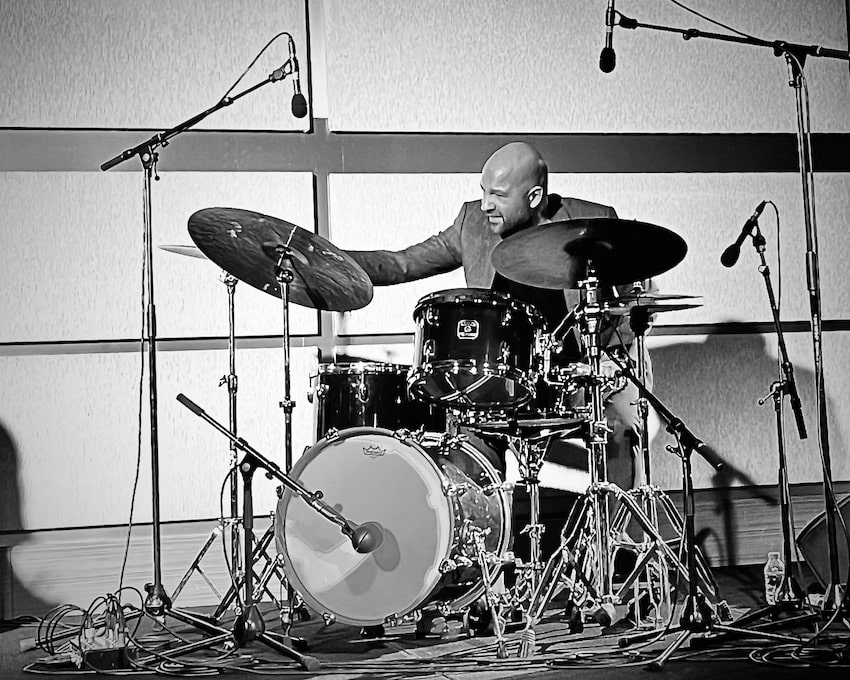
Not only are the three musicians technically proficient, but their choruses are heartfelt, never too long, without unnecessary showboating. A trialogue, like a chat between friends over a drink. The first launches an idea, then is immediately supported by the other two, who in turn take the lead.
Another nice surprise is their own composition “We Can’t“, a fast-paced ballad with lovely rising and falling arpeggios.
There’s a touch of Errol Garner in Kerem Görsev‘s playing, as he plays in a very loose way, then suddenly changes with perfect mastery from percussive chords to “locked hands” à la Milt Buckner.
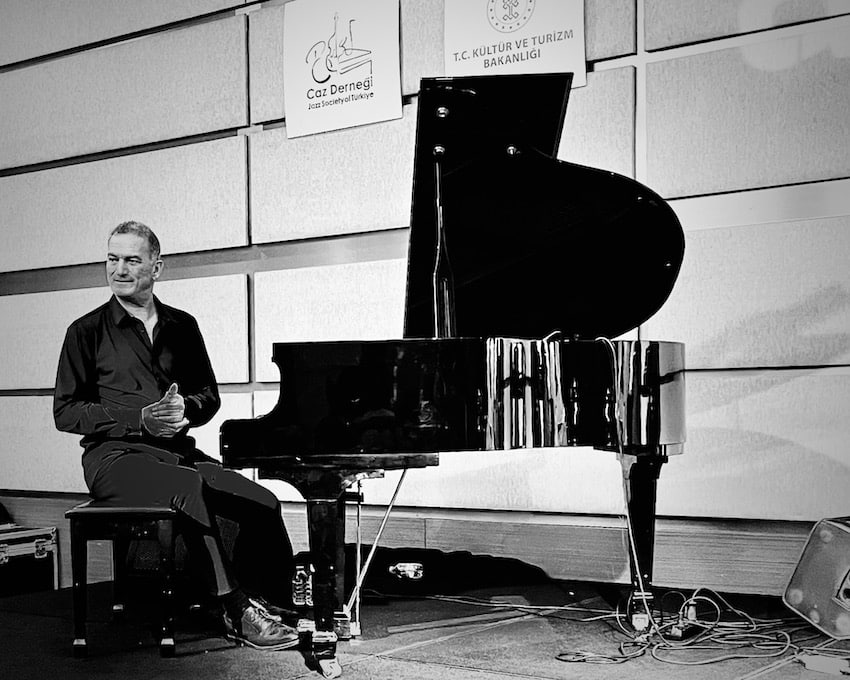
Beautiful jazz that swings and soars to the East across the Anatolian plains. The evening closes with “Mango“, a virtuosic Afro-Cuban tune that featured on his 2001 album “Warm Autumn“.
Standing ovation!
And it took two encores before the audience finally agreed to leave this highly successful opening night.
Thursday November 16
Telvin 4tet.
The second Jazz evening took place in the Turkish American Association Foundation hall. The Telvin 4tet is led by the astonishing guitarist Erkan Oğur. A second concert sold out. He was accompanied by drummer Turgut Alp Bekoğlu, Can Çankaya on keyboards and Kağan Yıldız on double bass.
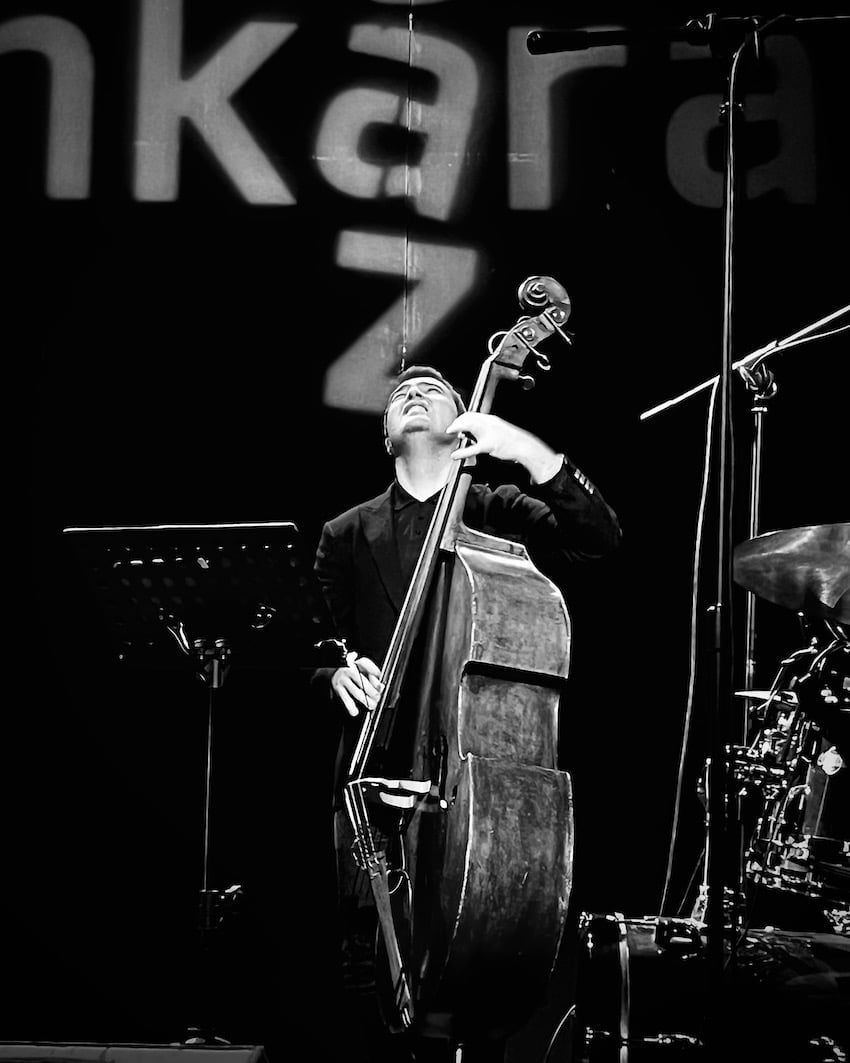
 Jazz colors of beauty, music that takes you on a journey into the history and tradition of the rich folk music of the Middle East. It’s clear that this is perfectly jazz music, with all the ingredients for a perfect recipe: improvisations, total freedom, divine choruses, listening and dialogue between the musicians. The lead guitar always returns to the melodies of traditional music. The arrangements are a thing of beauty.
Jazz colors of beauty, music that takes you on a journey into the history and tradition of the rich folk music of the Middle East. It’s clear that this is perfectly jazz music, with all the ingredients for a perfect recipe: improvisations, total freedom, divine choruses, listening and dialogue between the musicians. The lead guitar always returns to the melodies of traditional music. The arrangements are a thing of beauty.
 Can Çankaya‘s keyboard and Erkan Oğur‘s guitar offer our attentive ears rich harmonic ornamentation. A short phrase is proposed by the guitar, which is then taken up and ornamented by the various intruments, in successive stages to arrive at an increasingly free jazz. There’s a touch of Pat Metheny crossed with Larry Coryell in this guitar playing. It also reminds me of the two guitarists I programmed for the last Jazz in Noyon Festival: Ivan Marovic from Montenegro and Frenchman Pierre Durand. We dive into the roots of jazz, from blues to modern jazz.
Can Çankaya‘s keyboard and Erkan Oğur‘s guitar offer our attentive ears rich harmonic ornamentation. A short phrase is proposed by the guitar, which is then taken up and ornamented by the various intruments, in successive stages to arrive at an increasingly free jazz. There’s a touch of Pat Metheny crossed with Larry Coryell in this guitar playing. It also reminds me of the two guitarists I programmed for the last Jazz in Noyon Festival: Ivan Marovic from Montenegro and Frenchman Pierre Durand. We dive into the roots of jazz, from blues to modern jazz.
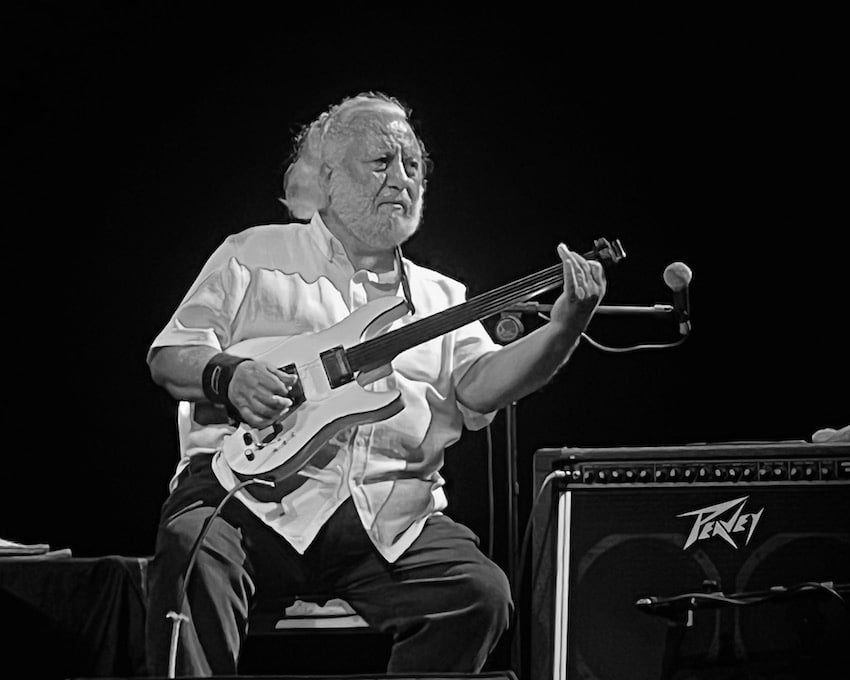
It seems to me that this music can be described as progressive jazz fused with ethno jazz.
Erkan Oğur is a little-known musician in France, although he has already given a concert of traditional music at the Philharmonie de Paris in February 2007, playing lute, saz, kopuz and cümbüs.
He doesn’t say much on stage. Incredibly concentrated, he indicates after a little over an hour’s concert that he’s tired because this is very difficult music to perform. And that he will play the last piece before going home.
We understand. A total success!

You can now listen to him – and Kerem Görsev – on Couleurs Jazz Radio. May their music inspire the programmers of jazz festivals and venues in France… instead of the endless mediocre trumpeter of Lebanese origin, whose name we won’t mention here.
At the Ankara Jazz Festival, you’ll hear original jazz, with very few foreign groups, just world-class local musicians. And the next generation is in the making. Proof of this is the discovery of a very young guitarist and singer (15 years old!).
Friday November 17
Rüzgar Yıldırım Quartet
The concert takes place at C Samm’s Bistro,( pronounced “chez” the audience is very diverse and no doubt representative of the population of Ankara, young people, older people, families, couples and not just heterosexuals. A good-natured, relaxed atmosphere. The young Rüzgar Yıldırım, born in 2008, shirt, jacket and tie, starts off with standards from the American song book, with determination.
 Despite his occasional lack of confidence and a few forgivable mistakes given his very young age, we’re impressed by his potential. He’s at ease in the lower registers and in scats that are well-felt and not too demonstrative. He reminds us a little of Jamie Cullum. He dares to play standards like “I Fall in Love too Easily“. There’s no shortage of opportunities. The young man has just won a prize in the Nardis Young Jazz Vocal Competition. Tonight is his 3rd concert.
Despite his occasional lack of confidence and a few forgivable mistakes given his very young age, we’re impressed by his potential. He’s at ease in the lower registers and in scats that are well-felt and not too demonstrative. He reminds us a little of Jamie Cullum. He dares to play standards like “I Fall in Love too Easily“. There’s no shortage of opportunities. The young man has just won a prize in the Nardis Young Jazz Vocal Competition. Tonight is his 3rd concert.


Let’s bet that Rüzgar Yıldırım will go far.
Let’s also note some of the artists who took part in this year’s Festival: Hakan Başar Trio, Yiğit Özatalaya with Barış Ertürk Mustafa Kemal Emirel, French bassist Renaud Garcia-Fons, Ahmet Berker, Nuri Bilge Ceylan, the electronic duo of guitarist Onur Aymergen and performer Sinem İslamoğlu, and the acoustic quartet of Dutch saxophonist Yuri Honing, Arzum Biner Sextet….
We can’t recommend this lovely festival in a charming town highly enough.
Jazz is supported by Unesco, because jazz has always defended this lofty idea of freedom of expression. In fact, it was the main theme of this year’s edition. So, in these difficult times, here and everywhere, let’s celebrate the values that make men and women truly more human. Long live the Ankara Jazz Festival. Long live Jazz!
Why should you choose to come to the Ankara Jazz Festival… Apart from the quality of the program and the music you can discover?
The city’s 800,000 students (10% of the population) explain the high level of cultural activity, with numerous exhibitions, concerts and festivals taking place all year round.
This year, 2023, Turkey celebrates the centenary of the Republic. And Ankara, which became the capital thanks to the nation’s beloved father, Mustafa Kemal Atatürk (born in Thessaloniki between December 1880 and May 1881, and died in Istambul on November 10, 1938), was truly “The Place to Be!” The alignment of the planets making things right, it was the occasion to come this year in November.
His shadow hovered over our heads, as there are many places where he is celebrated: squares, statues, the old parliament, and above all his impressive and very large mausoleum.
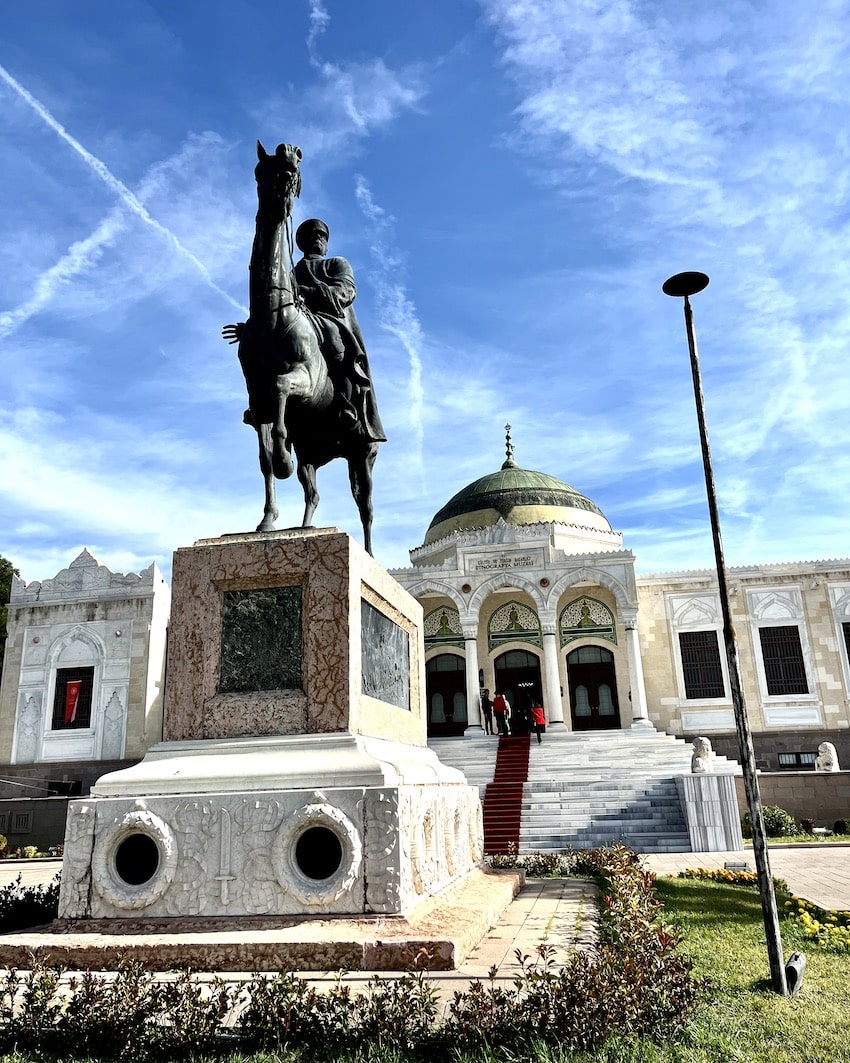 Among other major achievements, he enshrined secularism in the constitution, abolished Islam as the official religion, gave women the right to vote, abolished Sharia law and replaced the Arabic alphabet with the Latin alphabet. On November 24, 1934, the Assembly named him “Atatürk”, literally the “Father Turk”, meaning “Turk as the ancients were”, the word “Ata” meaning ancestor.
Among other major achievements, he enshrined secularism in the constitution, abolished Islam as the official religion, gave women the right to vote, abolished Sharia law and replaced the Arabic alphabet with the Latin alphabet. On November 24, 1934, the Assembly named him “Atatürk”, literally the “Father Turk”, meaning “Turk as the ancients were”, the word “Ata” meaning ancestor.
Ataturk’s Mausoleum
So, our first visit was to his imposing mausoleum on Anit Hill, Anıtkabir.
Construction of Atatürk’s mausoleum began in 1944. A gigantic building, it is reached via a gigantic walkway lined with lions.
A peaceful yet military atmosphere reigns here, with the numerous processions and tributes paid by different corps of troops every 1/2 hour or so. The architectural lines are sober, the volumes imposing.
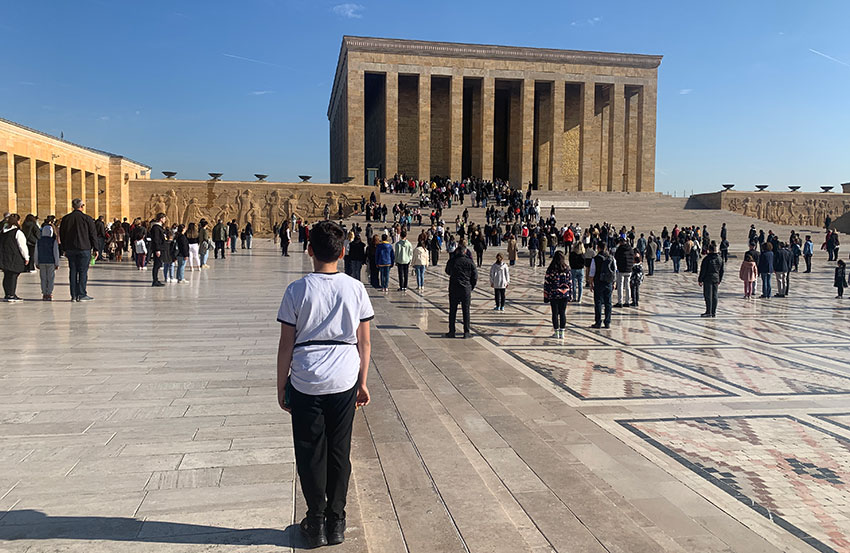

 With 800,000 students (10% of the population), the city is a hub of cultural activity, with numerous exhibitions, concerts and festivals taking place all year round.
With 800,000 students (10% of the population), the city is a hub of cultural activity, with numerous exhibitions, concerts and festivals taking place all year round.
Gordion
Gordion was the capital of ancient Phrygia, located in the valley of the Sangare River some 70 km southwest of Ankara. It has always occupied a strategic and coveted position, providing a stronghold over the surrounding fertile lands. The city was also situated on the ancient trade route through the heart of Asia Minor, which became known as the “Royal Road” under the Persian king Darius I. We were lucky enough to visit this archaeological site, filled with remains from various periods from the Bronze Age onwards. The name Gordion was also made famous by the Gordian knot… which, legend has it, the Hellenic emperor Alexander the Great untied by cutting it off with his sword. So why get bored and spend hours there…
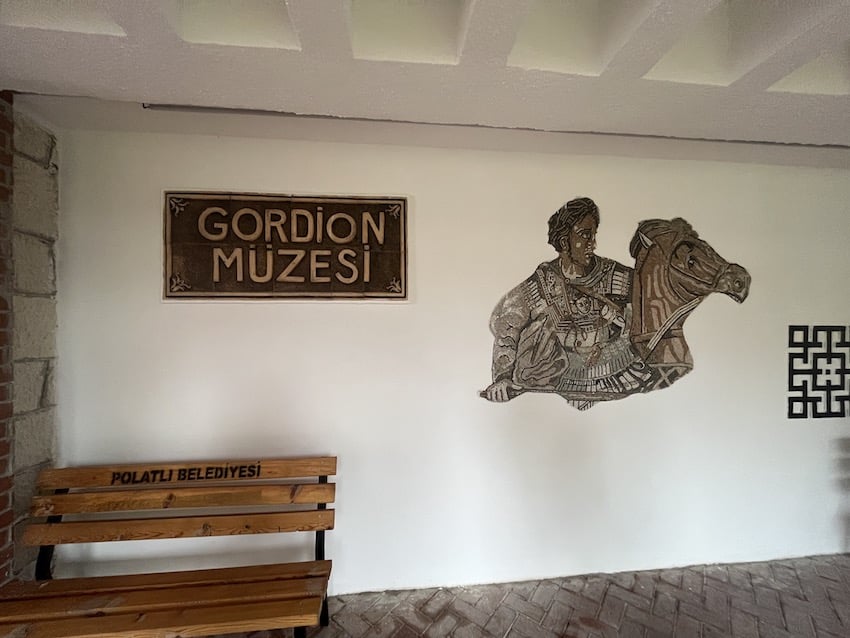
A royal tumulus was archaeologically excavated in 1957. With a diameter of just under 300 metres, it is 43 metres high. Inside the wooden burial chamber, the corpse of a man (King Midas or his father?) was discovered, along with some of the earliest inscriptions.
The kingdom of Phrygia later declined in the wake of Lydian, Persian and then Macedonian invasions, but retained its role as a pre-eminent trading center until Roman times.
The State Museum for Painting and Sculpture
The museum was created in the light of Atatürk’s reforms. In the early days of the Turkish Republic, fine arts such as painting and sculpture were rarely practiced in Turkey due to the Islamic tradition of avoiding idolatry. Through his modernization efforts, Atatürk sought to change this. He sought to create a new sense of national identity through the promotion of the arts[, believing that culture should be the foundation of the Turkish Republic.
Today, it is an art center exhibiting the works of artists who played an important role in the development of Turkish painting and sculpture.
It boasts a magnificent opera house, normally closed to the public, but opened to us by our guide. We entered through Ataturk’s box.

The Museum adjoins another building housing the interesting Ethnography Museum.
This presents traditional Turkish art from the Seljuk period to the present day.
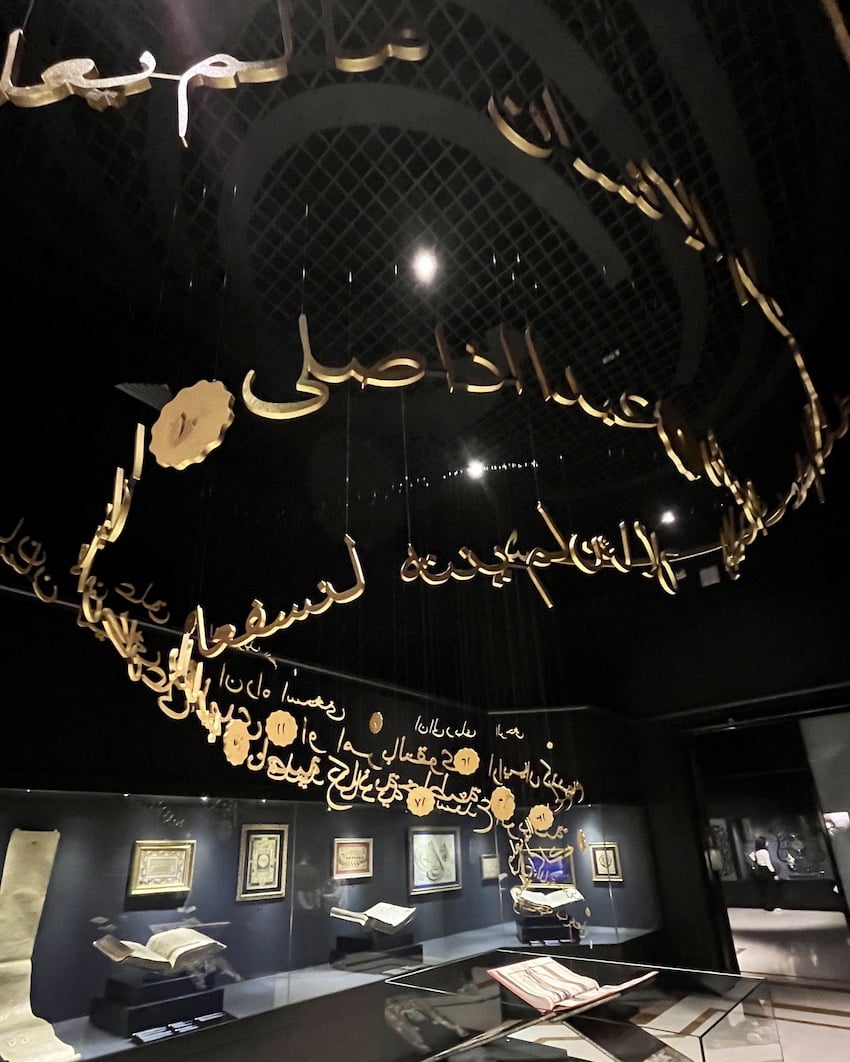
Folk garments, ornaments, shoes, clogs from various regions of Anatolia, women’s and men’s socks from the Sivas region, clutches, lace, wedding dresses, bridal shaving sets are all part of ancient Turkish traditional art.
A collection of carpets from the regions of Uşak, Gördes, Bergama, Kula, Milas, Ladik, Karaman, Niğde, Kırşehir, which are among the centers of carpet weaving, with technical materials and unique designs.
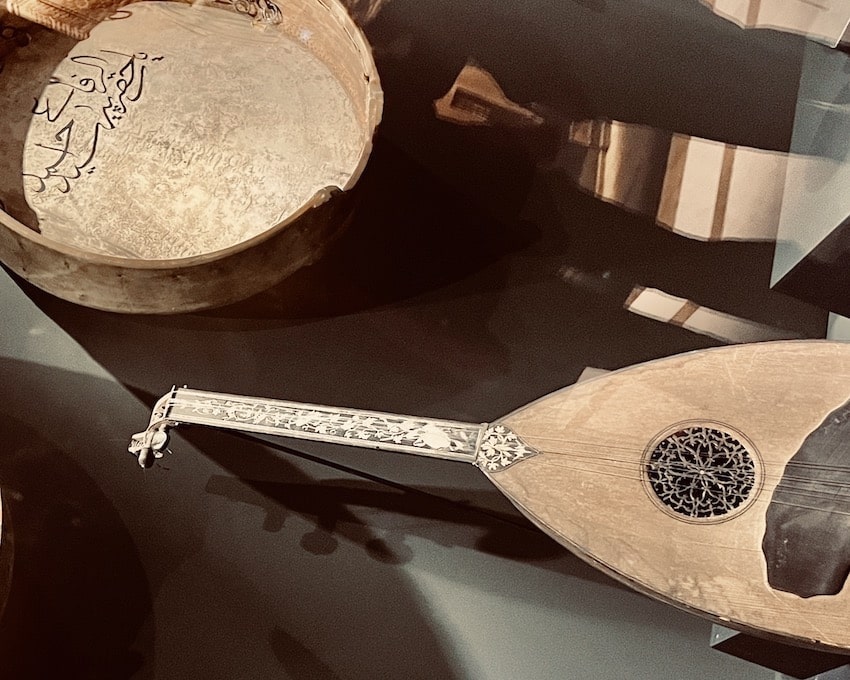
Fine examples of Anatolian metalwork include 15th-century Mamluk cauldrons, Ottoman sorbet cauldrons, jugs, platters, bows, arrows, yataghans… and fine examples of Turkish calligraphy.
One of the finest examples of Turkish woodwork: the throne of the Seljuk sultan Kaykhusraw III (13th century), the sarcophagus of Ahi Şerafettin (14th century).
Anatolian Civilizations Museum.
The highlight was a visit to the incredible Museum of Anatolian Civilizations.
(Anadolu Medeniyetleri Müzesi), also known as the Hittite Museum. It’s located right in the center of Ankara, on the southern slope of the citadel, in the Atpazan district of the Turkish capital. It is the most important archaeological museum in Turkey.

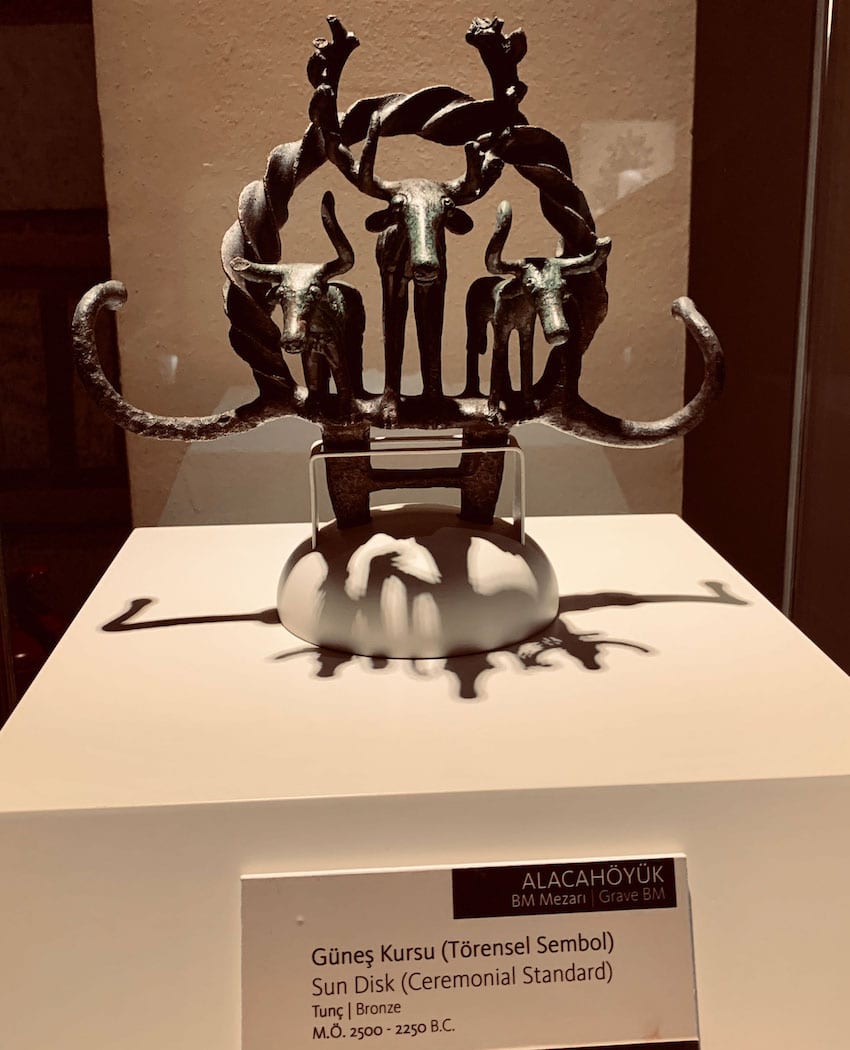 Although originally designed to house evidence of the Hittite civilization, the museum now presents collections from all periods, from the Palaeolithic to modern times.
Although originally designed to house evidence of the Hittite civilization, the museum now presents collections from all periods, from the Palaeolithic to modern times.
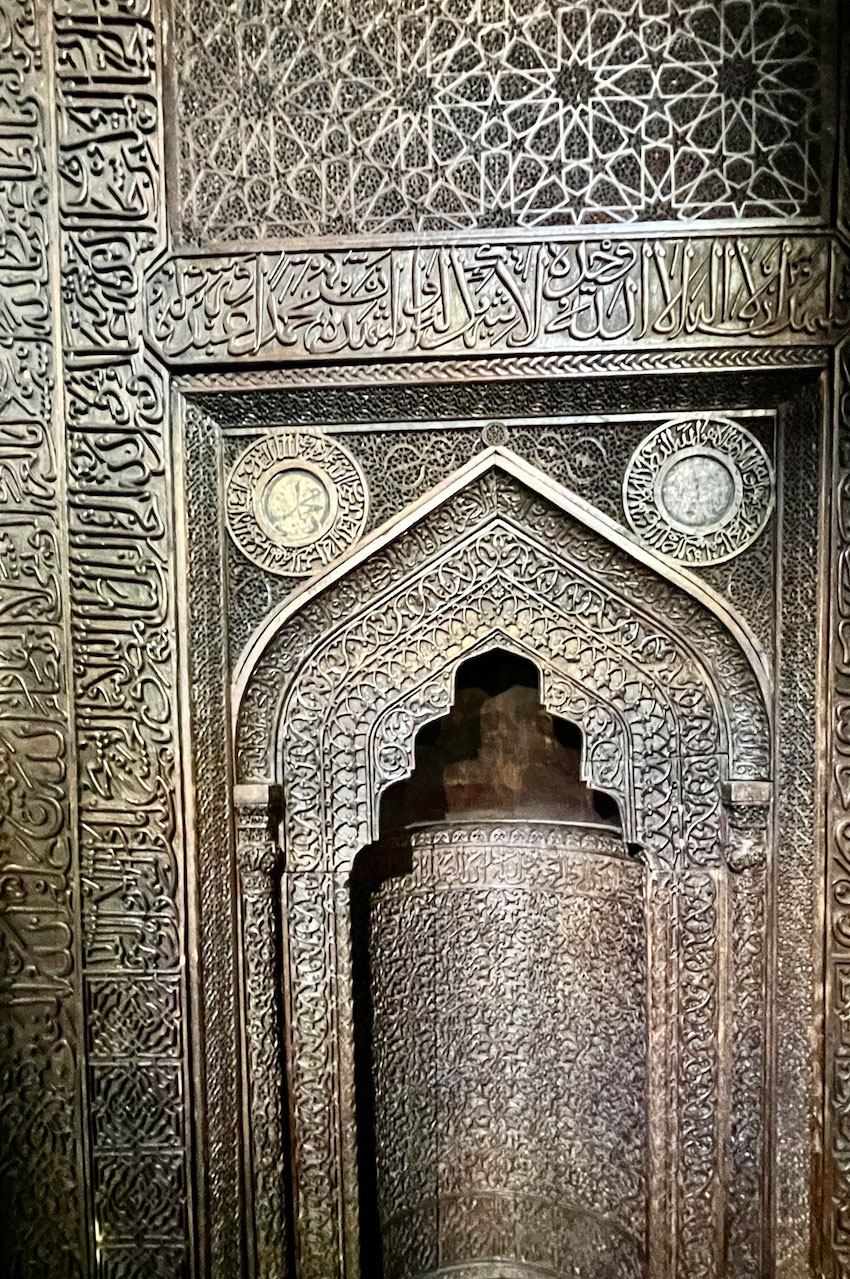

The former Kursunlu Han caravanserai houses the reading rooms, library, conference room, laboratory and workshop, while the Ottoman building of the former bedesten (covered bazaar) houses collections of Anatolian archaeology from the Paleolithic, Late Bronze Age, Hittite, Phrygian, Uraltarian, Greek, Hellenistic, Roman, Byzantine, Seleucid and Ottoman periods.
To do this properly, you’d need to spend several days here, where the objects are superbly displayed.
The museum is housed in two Ottoman-era buildings: the former Mahmut Paşa Bedesteni covered bazaar and the Kurşunlu Han caravanserai.
Most of the Late Bronze Age finds come from the region of today’s Çorum province, in the heart of the Hittite Empire around the capital Hattuša. These objects, dating from 1750 to 1200 BC, include clay vases, including tubs, sieve containers and canthars, some of which are zoomorphic (bulls, ducks), bronze statuettes, as well as seals and cuneiform documents.
Among these are copies of the peace treaty between the Hittite and Egyptian empires after the Battle of Kadesh, the first known written peace treaty in history.
The centerpiece of the Phrygian period (1200-700 B.C.) is the replica of the burial chamber of the great Gordion tumulus, possibly the burial place of King Midas. Phrygian bronze vessels such as cauldrons, bowls, plates, sieved jugs, ladles and numerous bronze fibulae, also from Gordion and the surrounding area, can also be seen in the south and east rooms.
The Ankara citadel
(in Turkish: Ankara Kalesi), is an ancient or medieval fortification located in the city of Ankara. The exact date of its construction is unknown.
 It was controlled by the Romans and Byzantines before being captured by Seldjoukides in 1073, by Crusadors in 1101 and then by the Seldjoukides once again in 1227. The château was later extended by Ibrahim Pacha in 1832 during the ottomane era.
It was controlled by the Romans and Byzantines before being captured by Seldjoukides in 1073, by Crusadors in 1101 and then by the Seldjoukides once again in 1227. The château was later extended by Ibrahim Pacha in 1832 during the ottomane era.
 The outer citadel surrounds old Ankara. It has 42 pentagonal towers along the walls, which vary in height from 14 to 16 meters. Its south and west walls intersect at right angles, the east walls follow the slopes of the hill and the north side has been protected with a different type of defensive wall.
The outer citadel surrounds old Ankara. It has 42 pentagonal towers along the walls, which vary in height from 14 to 16 meters. Its south and west walls intersect at right angles, the east walls follow the slopes of the hill and the north side has been protected with a different type of defensive wall.
The Hamamönü district.
Gradually becoming a tourist center thanks to the restoration and renovation campaigns that were launched and awarded the EDEN European Destination of Excellence prize by the European Commission in 2011, the district has become one of the most visited places in Ankara by both Turkish and foreign tourists. Sheltered from the noise and crowds typical of large metropolises, this area of the old town is a favorite for those looking for an authentic, tranquil setting.
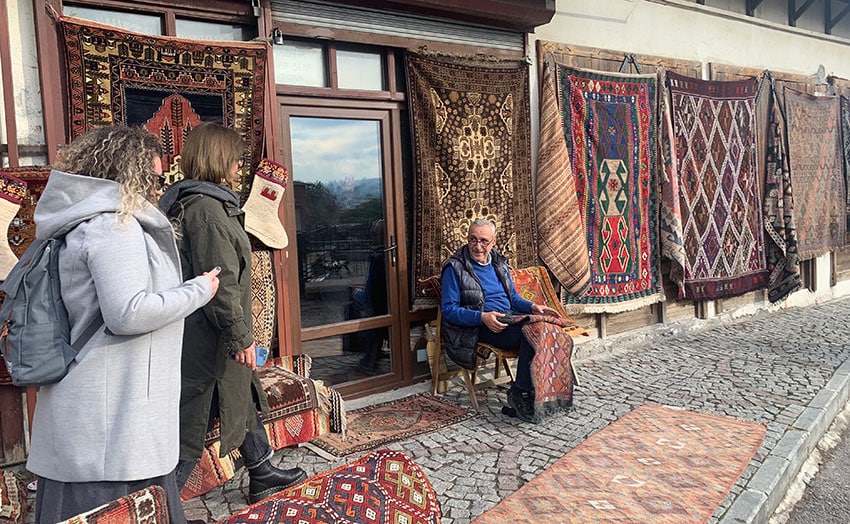

 The houses of Hamamönü, which reflect the urban fabric of the Ottoman era and the early years of the Republic, retain Ottoman architectural features and allow you to imagine ancient Ankara. The narrow streets give the impression of being in the middle of an Ottoman village. Important Ottoman buildings in the district include the Karacabey hammam and the Taceddin Sultan and Hacı Musa mosques.
The houses of Hamamönü, which reflect the urban fabric of the Ottoman era and the early years of the Republic, retain Ottoman architectural features and allow you to imagine ancient Ankara. The narrow streets give the impression of being in the middle of an Ottoman village. Important Ottoman buildings in the district include the Karacabey hammam and the Taceddin Sultan and Hacı Musa mosques.

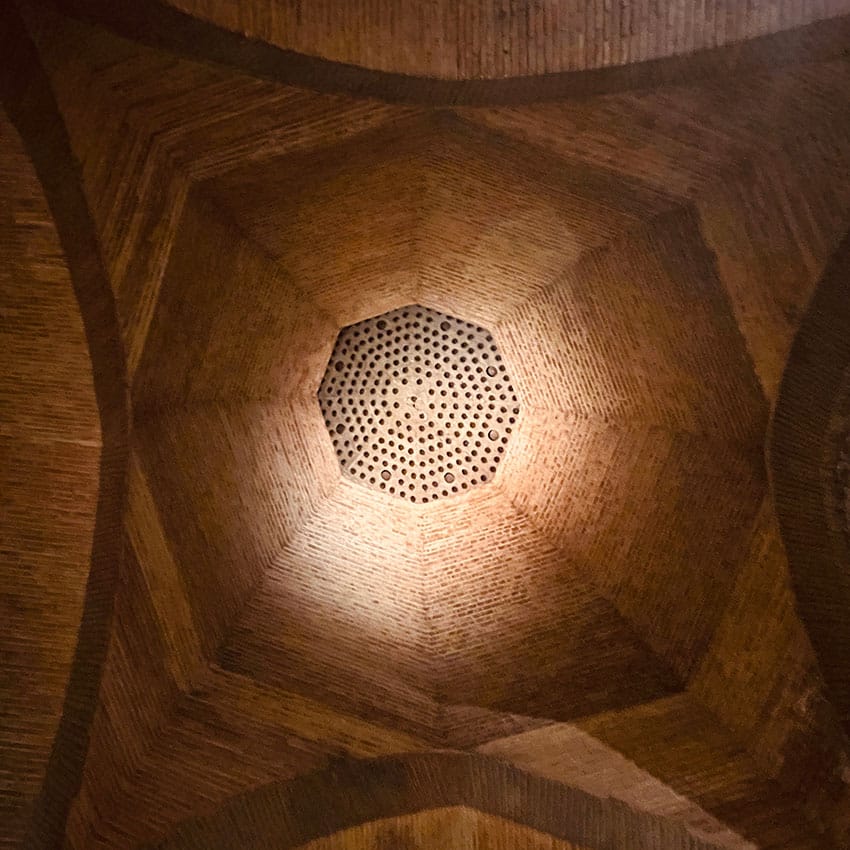
Gourmet Food
One of the treasures of the Anatolian capital is its gastronomy. Attentive service in every restaurant, from the most modest to the most upscale. Local vegetables and fruit with the true flavours of yesteryear, the opposite of the Dutch industry that is all too often to be found on our stalls and plates. A real feast for the eyes and the palate.

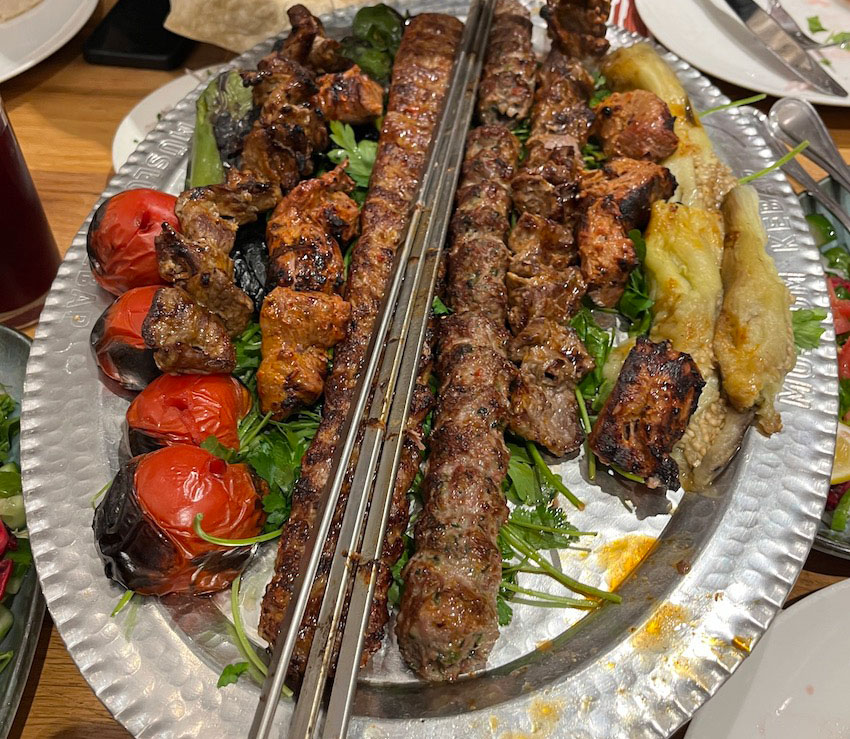

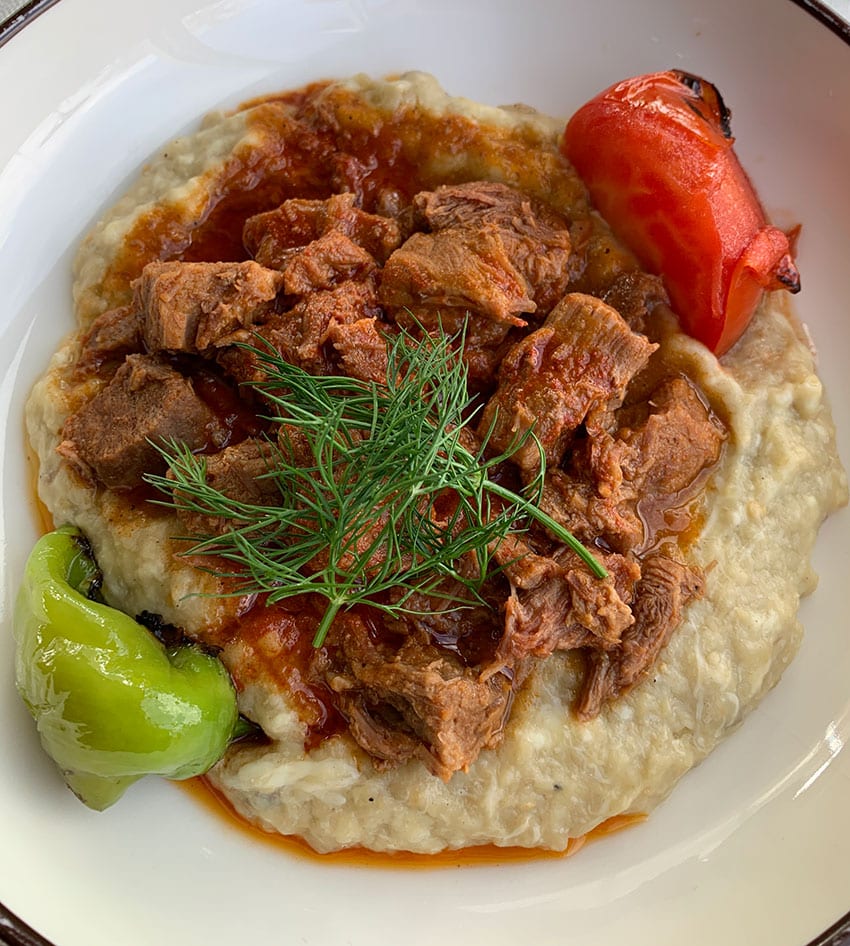



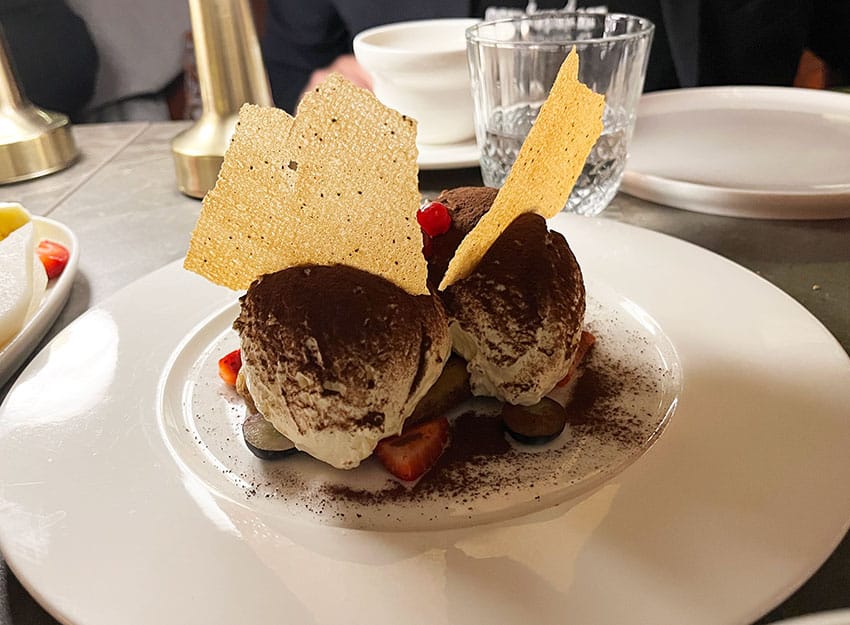 Our great chauffeur guide.
Our great chauffeur guide.

©All Photos Gaby Sanchez for Couleurs Jazz
Photo Header from the room of Lugal Hotel Sheraton, Ankara.
@goturkiye, @goankara #GoTürkiye and #GoAnkara






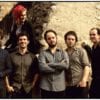

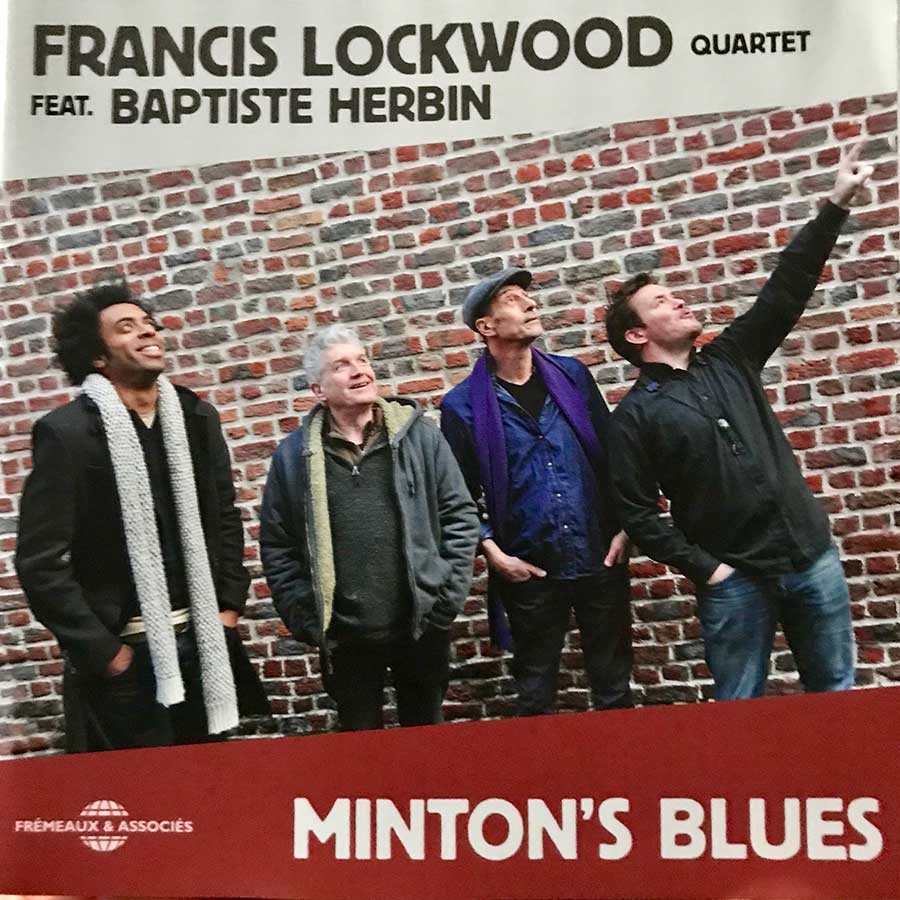

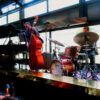
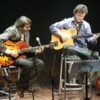

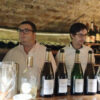

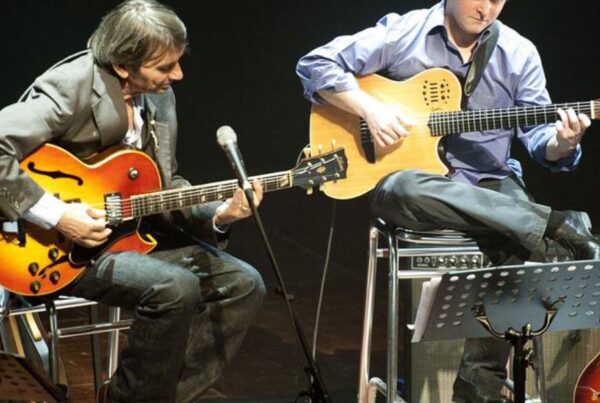
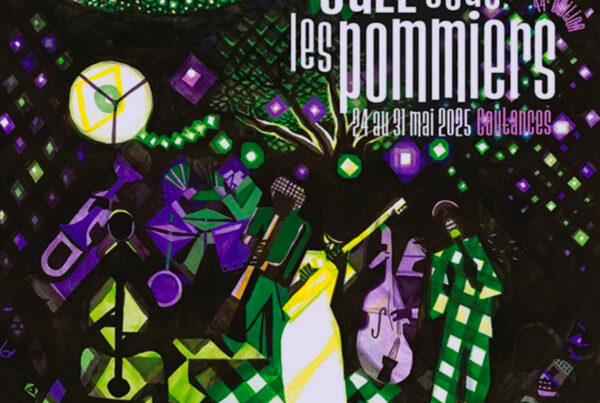



Words of appreciation for your contribution to writing this article and showing the different faces of this festival and the city.
Thank you Wit for your support and your comment. We do appreciate! Ankara is really a great city. And Turkey is a superb artistic country especially for its music talents. One day real democracy will be back, for sure.
I was impressed by one song brodcast on CJR by a musician from Turkey mentioned in the article.Erkan (Ekgan) Ogur.There are two names in the article ,which one is correct?
Thank you for your proof reading dear Wit. Yes the name of this brilliant musician is Erkan as first mentioned in the article.